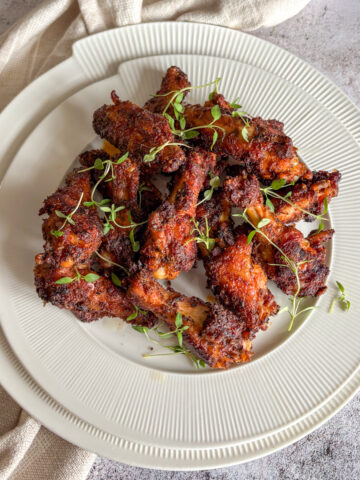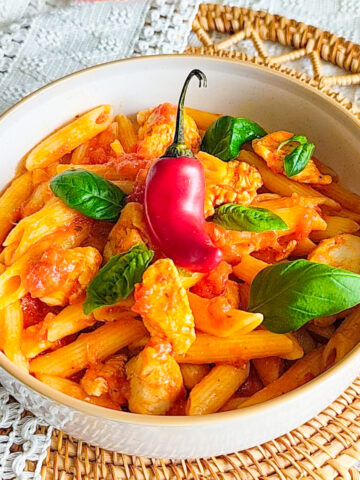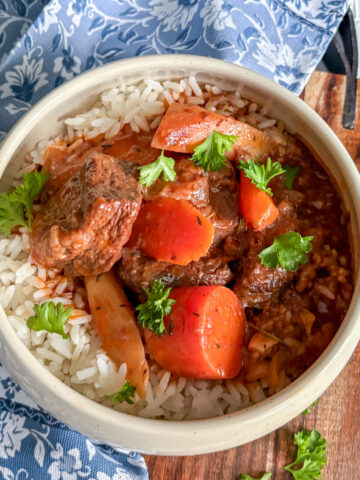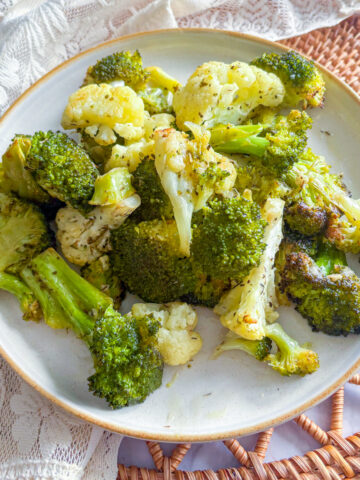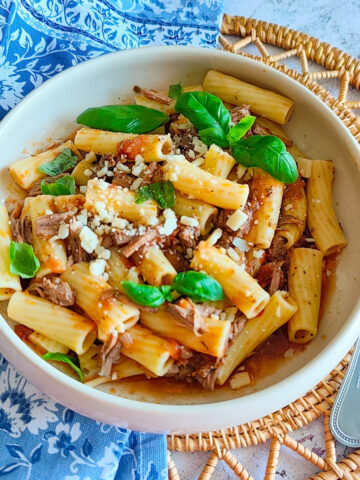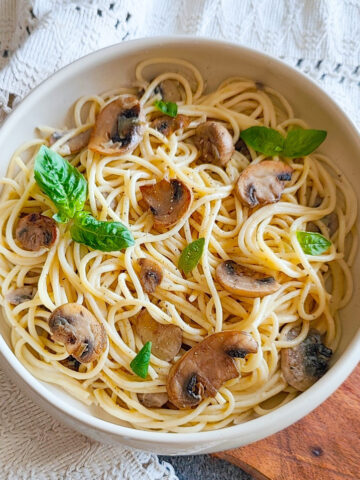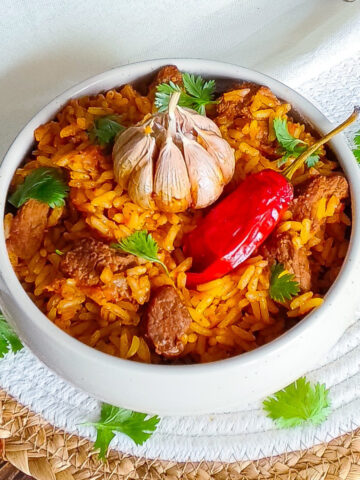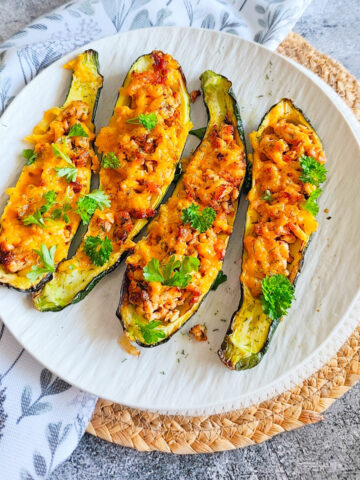Basa fillet is a brilliantly versatile, mild white fish that cooks quickly and pairs beautifully with bold herbs and citrus. This basa fillet recipe creates crispy, pan-cooked fish with fragrant parsley butter and a hit of fresh lemon — simple, honest, and delicious.

Basa fillet is one of those ingredients that tends to fly under the radar, but when prepared right, it becomes a weeknight favourite. In this recipe, I’ll show you how to cook basa fillet so it flakes perfectly, stays moist, and tastes like something far more indulgent than the effort suggests.
This dish is fan-freaking-fantastic for anyone who wants something quick, flavourful, and budget-friendly, it can be done in less than 10 minutes! Whether you're cooking for one or feeding a family, this recipe checks all the boxes — and then some. Serve it up with mashed sweet potatoes, fluffy rice, or a crisp green salad, and it’ll shine any day of the week. I especially love making it when I want something light but satisfying after a long day. The basa fillet's mild flavour means it acts like a blank canvas, soaking up the buttery garlic, herby finish and that splash of lemon like it was made for it.
Jump to:
Ingredients for Basa Fillet Recipe
Here is what you will need to cook basa fillet perfectly:
- Basa fillets – These are soft, lean, and mild-tasting. Their delicate texture makes them perfect for quick pan-cooking, and they hold seasoning well. I prefer to use chilled instead of frozen, there is not much difference in the price. You can buy it from Tesco's, Aldi or Sainsbury's for around £2 or 2.99Eur in ROI.
- Plain flour – A light dusting creates a subtle crust and helps the fish brown gently in the pan without overpowering its flavour.
- Salt and white pepper – Just enough to season the flour and enhance the natural sweetness of the fish. I prefer to use white pepper when cooking fish, as black would overpower a bit.
- Olive oil – For frying; helps get that golden colour without drying out the fillets.
- Parchment paper – Crucial in this method. It prevents sticking and helps control heat distribution for a cleaner, more even cook. When using parchment paper, I never have to worry that fish fillets would stick to the pan. This method I am always using, it never let me down!
- Salted butter – Melted into a sauce with aromatics. Salted works better here than unsalted — it deepens the overall flavour.
- Spring onions – Added to the butter for a fresh, slightly sweet onion kick.
- Garlic – Grated finely so it blends into the butter and infuses the fish with savoury depth.
- Fresh parsley – Sliced just before using to preserve its punchy, green brightness.
- Fresh lemon juice + wedges – That final zing lifts everything. A little squeeze over the top balances the richness of the butter and the fish.
If you like stronger flavours, you can add a sprinkle of smoked paprika to the flour for a hint of heat, or a dash of cumin or fennel seeds to the butter for an aromatic twist.

Instructions - How to Cook Basa Fillet
This is one of the easiest ways to prepare fish at home — no oven, no deep frying, and no tricky techniques.

- Step 1: Start by mixing plain flour with a pinch of salt and white pepper in a large shallow dish. Pat dry basa fillets with paper towels. Dip your basa fillets lightly in the flour mixture, making sure each piece gets an even coat. Shake off the excess so they stay light.

- Step 2: Line a large skillet with parchment paper and trim any edges if they hang out of the pan. Drizzle olive oil onto the paper and heat it on medium. Lay the floured basa fillets on top and cook for 3 minutes per side — don’t move them around too much, just flip once. They’re ready when they flake easily with light pressure. Transfer to kitchen paper to remove any extra oil.

- Step 3: In a microwave-safe bowl, combine butter, sliced spring onions, grated garlic, and parsley. Microwave for 30 seconds, stir, then microwave a little more until the butter is melted and everything’s fragrant.

- Step 4: Place your cooked basa fillets on a serving plate, drizzle with lemon juice, and pour over the herbed butter. Serve hot.
Two Cooking Tips:
- Use medium heat — not high. Basa cooks quickly and can dry out or brown too fast. A steady medium heat ensures the inside cooks through without burning the outside.
- Don’t skip the parchment paper. It prevents sticking and makes flipping the fillets much easier without breaking them apart — especially useful with delicate fish like basa.
How to Serve Basa Fillet and How to Store It
You can serve this basa fillet recipe in a variety of ways depending on your mood and what you’ve got at home. I love pairing it with mashed sweet potatoes for a comforting meal, but it’s just as good with a bowl of lemony couscous, herby rice, or even buttery new potatoes. Add a handful of rocket or spinach on the side with a splash of olive oil for a fresh contrast. If you’re entertaining, serve the fish whole on a large platter with extra lemon wedges and a drizzle of extra virgin olive oil for a rustic, relaxed vibe.
For storage, cool the cooked fillets completely before transferring them into an airtight container. They’ll keep well in the fridge for up to two days. To reheat, gently warm in a pan over low heat with a little butter or olive oil, or microwave in short bursts. I wouldn’t recommend freezing this particular dish — the texture of basa fillet can suffer after freezing and thawing.

Top Tips:
Follow these tips for the most perfection and "yumminess":
- Don’t skip the flour coating. This step helps the basa fillet form a light, golden crust and keeps the fish from breaking apart during cooking. It also creates a subtle barrier that locks in moisture and improves the final texture. Use just a dusting — you don’t want it thick or gloopy. Shake off excess flour for best results.
- Use parchment paper in the pan. It might sound odd, but it transforms the cooking process. It reduces the need for excess oil, stops the fish from sticking, and helps evenly distribute heat. It's especially helpful when cooking fragile fish like basa, which tends to break easily. And it would never allow the fish fillet to stick to the pan! I use it when cooking different types of fish, always!
- Salted butter makes a difference. The salt in the butter enhances the herbs and garlic and ties all the flavours together. Unsalted butter can work too, but you'll likely need to add extra seasoning. I’ve tested both — go for salted if you can.
- Don’t overcook the fish. Basa fillet is very lean and cooks quickly — overcooking will make it dry and crumbly. You know it's done when it flakes with gentle pressure. Stick to the 3 minutes per side rule, especially on medium heat.
- Use fresh herbs. Parsley adds essential brightness to balance the richness of butter and the mild fish. Dried herbs just won’t cut it here — they’ll taste flat and overpower the subtle flavours.
- Lemon juice is more than garnish. A squeeze of lemon right at the end brings the whole dish to life. It cuts through the fat of the butter and sharpens the flavour of the fish. Don’t skip it, and serve with extra wedges if you like it citrusy.
- Prep all ingredients before you start cooking. This is a quick recipe — everything comes together in minutes. Chop the herbs, slice the spring onions, and get the butter mix ready beforehand to avoid scrambling during the cooking process.
- Microwave times vary — watch the butter. When melting the herb butter, microwave in short bursts and stir in between to avoid burning the garlic. Burnt garlic ruins the dish, so keep an eye on it and stir until just fragrant.
- Pat the fish dry before flouring. Moisture on the surface of the fillets will make the flour clump and won’t give you that nice, light crust. Use kitchen paper to blot them gently before dipping into the seasoned flour.
- Leftovers make great fish sandwiches. If you’ve got leftover basa, flake it and toss it into a sandwich or wrap with mayo, rocket, and pickles. It’s a brilliant way to use up extra portions without reheating the fillets.

FAQ
What is basa fillet?
Basa fillet is a type of freshwater white fish native to Southeast Asia, especially Vietnam. It has a mild, slightly sweet flavour and a soft texture, making it ideal for a variety of cooking methods. It’s often used as a more affordable alternative to cod or haddock. Because it’s so neutral, it pairs well with strong flavours and seasoning.
How do I know when basa fillet is cooked?
The fish should be opaque and flake easily when pressed with a fork or spatula. Basa cooks quickly, usually within 6 minutes total over medium heat. If it still looks translucent in the centre, give it another minute, but avoid overcooking as it becomes dry and crumbly.
Can I use frozen basa fillet?
Yes, but you’ll need to fully thaw it before cooking. Thaw overnight in the fridge or use the cold water method in a sealed bag. Once thawed, pat dry very well before flouring — excess water will ruin the crust and can make the fish steam instead of crisp.
Can I make the butter sauce ahead of time?
Yes, you can prep the butter, garlic, spring onion and parsley mix and store it in the fridge for a few hours. Just microwave right before serving so it’s hot and pourable. Make sure it’s freshly stirred before pouring over the fish.
Related
Looking for other recipes like this? Try these:
Pairing
These are my favorite dishes to serve with Basa Fillet:
Basa Fillet Recipe

Basa fillet is lightly floured and pan-fried, then topped with a fragrant parsley, garlic, and spring onion butter. A squeeze of lemon finishes this simple, satisfying dish.
Ingredients
- 4 basa fillet
- 4 tablespoon plain flour
- Pinch of salt
- Pinch of white pepper
- 2 tablespoon olive oil
- Parchment paper
- 50 g salted butter
- 4 spring onions, finely sliced
- 3 garlic cloves, grated or minced
- Bunch of fresh parsley leaves, finely sliced
- Fresh lemon juice
- Lemon for serving
Instructions
- Mix plain flour with a pinch of salt and white pepper in a shallow dish. Lightly coat each basa fillet in the flour, shaking off any excess.
- Place a sheet of parchment paper in a large skillet and trim the ends if needed. Pour in the olive oil and heat over medium. Add the basa fillets and cook for 3 minutes on each side, or until the fish flakes easily when pressed. Remove the fillets and place on kitchen paper to drain.
- In a microwave-safe bowl, combine salted butter, spring onions, garlic, and parsley. Microwave for 30 seconds, stir, and microwave again for a few seconds until the butter is melted and fragrant.
- Transfer the cooked basa fillets to a serving dish. Drizzle fresh lemon juice over the top, then spoon the herbed butter mixture over each fillet. Serve hot with lemon wedges.


